#Patron Saint of sailors and travellers
Explore tagged Tumblr posts
Text
#OTD in 587 – St Brendan the Navigator, early transatlantic voyager, dies.
In 484 St. Brendan was born in Ciarraighe Luachra near the port of Tralee, in Co Kerry, in the province of Munster, in the South West of Ireland. He was baptised at Tubrid, near Ardfert, by Saint Erc. He spent his first year with his parents, then he went to the home of the local chieftain, Airde mac Fidaigh at Cathair Airde in Listrim, three miles to the East. He returned to his family at the…
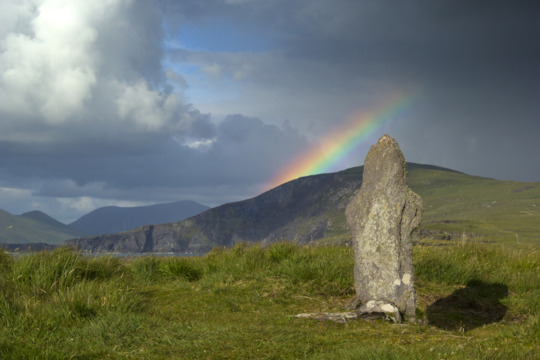
View On WordPress
#Ancient Cross#Ardfert#Co. Kerry#Egressio familiae S. Brendani#Holy Well#Ireland#Mount Brandon#Naval Academy#Navigatio Brendani#Patron Saint of sailors and travellers#St Patrick#St. Brendan the Navigator#Transatlantic Voyager#Twelve Apostles of Ireland#United States Naval Academy#Valentia Island
12 notes
·
View notes
Photo

Saint Brendan the Navigator 484 - 577 Feast Day: May 16 Patronage: boatmen, sailors, travelers, whales
St. Brendan the Navigator, an Irish saint, lived from 484 to 577. He was one of the Twelve Apostles of Ireland. He is most known for his legendary travels, especially to the “Isle of the Blessed”, also known as Saint Brendan’s Island. He is said to have encountered a sea monster and to have celebrated Easter Mass on the back of a giant whale!
Prints, plaques & holy cards available for purchase here: (website)
62 notes
·
View notes
Text
concepts related to different professions
Businessperson
abettor, adjutant, adviser/advisor, aid/aide, announcer, apprentice, archaeologist, assistant, auditor, authority, baker, barber, broker, businessperson, buyer, caretaker, cartoonist, chair, chef, client, colleague, conservator, consumer, correspondent, court, creator, curator, customer, dabbler, desk jockey, developer, drudge, employee, envoy, espionage, explorer, fellow, flier, flyer, fortuneteller, freshman, go-between, gourmet, guard, guru, hacker, hand, hawker, helper, hooker, inferior, informant or informer, inspector, interviewer, investigator, janitor, labor, liaison, messenger, moderator, monitor, navigator, newsman/woman, page, patron, picket, pioneer, poet, practitioner, prodigal, protégé, referee, representative, reviewer, rival, sailor, scout, seaman/woman, seller, shopper, speaker, spokesperson, spy, subordinate, tailor, traveler, virtuoso, wayfarer, writer
Educator
academic, adviser/advisor, alumnus/alumna, coach, conductor, disciplinarian, faculty, freshman, graduate, intellectual, learner, martinet, mastermind, monitor, practitioner, professor, rookie, savant, school, swami, trainer
Entertainer
acrobat, actress, aficionado, ballet dancer, character, comic, creator, director, fan, groupie, hero/heroine, humorist, inventor, luminary, magician, name, participant, personage/personality, player, protagonist, star, troubadour, virtuoso, zany
Financier
accountant, bean counter, broker, investor, spendthrift
Government officer
administrator, ambassador, authoritarian, autocracy, bureaucrat, consul, delegate, despot, diplomat, emir, empress, establishment, exile, fascist, figurehead, front runner, informant/informer, intermediary, leader, liaison, magistrate, master, mogul, mouthpiece, officer, oppressor, pacifist, patrol, personage/personality, police/police officer, prime minister, representative, snitch, spokesperson, tyrant, weasel
Legal practitioner
attorney, beneficiary, counsel, heir, judge, lawyer, officer, proponent, witness
Media person
commentator, journalist, newsman/woman, reporter, writer
Medical practitioner
analyst, druggist, nurse, patient, physician, researcher, therapist
Military person
combatant, conqueror, fighter, gladiator, lookout, militant, patrol, recruit, scout, seaman/woman, truant, warmonger, warrior
Politician
advocate, anarchist, apostle, arbitrator, conservative, dissident, extremist, firebrand, idealist, militant, mouthpiece, nonconformist, patron, picket, proponent, reactionary, sectarian
Religious person
acolyte, angel, atheist, chaplain, conformist, creator, deacon, doubter, dreamer, evangelism, father, genie, inventor, loner, minister, monk, pagan, pastor, priest, saint, skeptic, visionary, witch, wizard
NOTE
The above are concepts classified according to subject and usage. It not only helps writers and thinkers to organize their ideas but leads them from those very ideas to the words that can best express them.
It was, in part, created to turn an idea into a specific word. By linking together the main entries that share similar concepts, the index makes possible creative semantic connections between words in our language, stimulating thought and broadening vocabulary.
Source ⚜ Writing Basics & Refreshers ⚜ On Vocabulary
#vocabulary#langblr#writeblr#writing reference#spilled ink#creative writing#dark academia#writers on tumblr#poets on tumblr#poetry#literature#writing tips#writing prompt#writing#words#lit#studyblr#fiction#light academia#professions#writing resources
219 notes
·
View notes
Text
Diego Javier Luis is assistant professor of history at Tufts University in Massachusetts. He is the author of The First Asians in the Americas: A Transpacific History (forthcoming, 2024).
Edited by Sam Haselby.
Cape Sebastian in Oregon perches above two forested declivities along a rocky patch of the state’s southern coast. Travel there today, and you are likely to miss a roadside marker that reads:
Spanish navigators were the first to explore the North American Pacific Coast. Beginning fifty years after Columbus discovered the Western continents, Sebastian Vizciano [sic] saw this cape in 1603 and named it after the patron saint of the day of his discovery. Other navigators, Spanish, British, and American, followed a century and a half later.
Standing before this sign, I winced rather predictably as I read ‘discovery’. But simmering beneath my displeasure with this word was a deeper conviction that Sebastián Vizcaíno’s voyage was, indeed, significant, though not in the ways that the sign suggests. Thousands of miles to the east, in Seville, the old centre of the Spanish Empire, I had stumbled upon Vizcaíno’s voyage in the dusty volumes of treasury records for the port of Acapulco, Mexico. Buried in line after line of winding, Baroque script were curious notations – ‘chino’ and ‘japón’ – next to the names of seven sailors that Vizcaíno had recruited for his voyage up the North American coast. To the tune of carriages rumbling through Seville’s cobbled streets and the crinkle of centuries-old pages turning, I read the names again and again:
Antón Tomás Antonio Bengala Francisco Miguel Cristóbal Catoya Agustín Longalo Lucas Cate Agustín Sao
Seven Asian sailors – entombed by an archive and forgotten by human memory – had sailed with Vizcaíno to what is now Oregon. Where in the chronology of Asian American history could these sailors fit? Flip to the beginning of most books on Asian America, and you will find no content earlier than the 19th century. You will be in the world of the Gold Rush, the transcontinental railroad, indenture, and the San Francisco and Los Angeles Chinatowns.
These seven names transport us to a different world, a different timeline, a different Asian America. These sailors’ presence off the coast of Oregon predated not just the entire Asian American canon but also the founding of the United States and even of the Thirteen Colonies. The histories of the first Asians in the Americas do not take place in the nations born from the fires of British colonialism but, rather, they guide us to a region rarely considered relevant to Asian American history: Latin America.
Read more...
114 notes
·
View notes
Text

A woman in Llançà (Comarques Gironines, Catalonia) does a flower offering to the sea during a maritime procession on the day of the Virgin of Mount Carmel. Photo from festes.org.
The 16th of July is the feast of Virgin of Mount Carmel (Mare de Déu del Carme in Catalan), the patron saint of the sea and protector of all the people who work at sea or travel by sea. For this reason, many coastal towns and cities hold processions at sea, where the people who have ships or boats (traditionally it was fishermen, but nowadays people who might have a recreational boat also join) parade at sea following a boat that carries a statue of the Virgin of Mount Carmel, believed to bless the waters.
Besides being a holiday for fishermen, sailors, and everyone who works at sea, the feast is also in remembrance of those who lost their lives there. During the procession, people who have lost a relative or a dear person at sea throw a flower bouquet to the water in their memory. Working as a fisherman or a sailor has been for centuries one of the common jobs in our coast and necessary to give us food, but it was very dangerous. It's because of this danger that the worship of Virgin of Mount Carmel (equivalent to the goddess of the sea in other cultures) is so widespread in the Catalan coast and the name "Carme" (meaning "Carmel") has been for centuries one of the most popular female names in Catalan and other languages of coastal Southern Europe ("Carme" in Galician, "Carmen" in Spanish and Italian, "Carmela" in Italian, "Karmela" or "Karmen" in Croatian, etc).
_____________________________________________________
Nowadays, there is another situation that causes a huge amount of death at sea. Refugees and migrants coming from Africa try to cross the Mediterranean to reach Europe. Because of the legal difficulties in crossing the border legally, many migrants end up trying to cross the sea in bad quality boats usually run by mafias that don't care about their safety, so large amounts of people are crammed into small boats and often drown. In 2023 alone, 6,618 people died at sea trying to reach Spain. If you would like to help rescuing them, consider making a donation to the NGO Open Arms or purchasing something from their online shop. This non-profit non-governmental organization based in Catalonia has been rescuing migrants at sea for years, becoming one of the referent organizations in this.
#mare de déu del carme#tradicions#religió#llançà#catalunya#open arms#mediterranean#religion#christianity#catholicism#our lady of mount carmel#flowers#sea#coast#cultures#refugees#refugees welcome#charity
51 notes
·
View notes
Text
if john hartnell was baptized on july 16 (which he was. happy baptism day jarts <3) he was likely born on may 16— feast day of st brendan the navigator, patron saint of sailors and travelers at sea. so 😵💫🛐🌊⚓️🔮🤱🪦🗺️
#oh you know (gestures vaguely) the doomed arctic martyrs#franklin expedition#podium#saints#when you’re born on sailor day in sailor town to a shipmaker.#st brendan closest thing the arctic has to a patron btw. but once they leave the ships god abandons them- [gunshot]
27 notes
·
View notes
Text
I had a suspicion that the St. Christopher necklace John wears holds some sort of symbolism.
I had a nosey into St. Christopher. Apparently he is the patron saint for bachelors and travellers (specifically long distance drivers and sailors). John being single and living on the road in his van pretty much sums that side of his character up from what we know of him already.
What I did find interesting though is that Saint Christopher is also the patron saint of storms. Could that be a figurative hint towards John causing chaos in the village and those close around him when his secrets catch up with him? Perhaps the truth comes out and the village has to face his wrath as he tries to control it from spreading too far?
I'm probably giving the ed team too much credit by reading into it so closely.
10 notes
·
View notes
Text

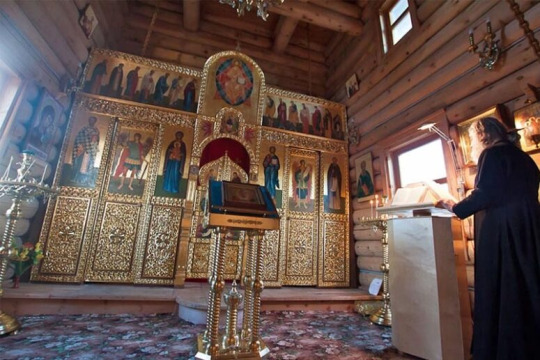

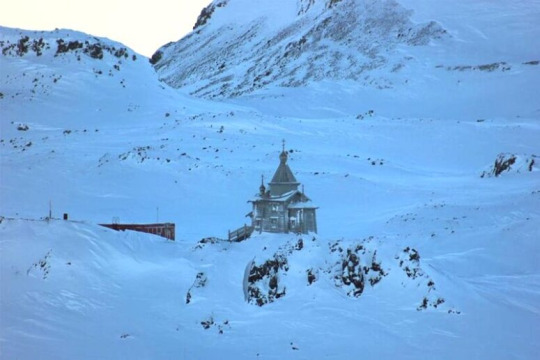
Holy Trinity Orthodox Church, Antarctica
A wooden Orthodox church was consecrated in 2004 in the harsh ice of Antarctica. Since then, the Divine Liturgy has been celebrated year-round in the middle of the white desert at the edge of the earth.
Peter and Valery took a blessing from Patriarch Alexy II and began collecting donations for the construction of the church. Over the three years of fund-raising, the church bells were cast and the iconostasis was prepared by artists from Palekh. In 2002, a cross was erected on the site of the future church on Mount Irina, above the Bellingshausen station. On January 25 of the same year, a Divine Liturgy was first celebrated in Antarctica, praying for all the polar explorers who had perished here.
Finally, in 2004 the construction began. The wooden church was cut down and assembled in Altai. The materials used were cedar and larch, which become as strong as metal over time to endure the harsh Antarctic frosts and hurricane winds. Then the church was disassembled, with the logs numbered and transported by ship to King George Island (Waterloo) in Antarctica, where the Russian Bellingshausen station is located. In a few months, the church was assembled without a single nail and secured from the inside with steel chains to make it more stable on the cliffs. To avoid legal complications, it was formally registered as a mission of the Holy Trinity Sergius Lavra.
Peter Zadirov planned to consecrate the church (as he had already done in his homeland) in honor of St. Nicholas the Wonderworker, the patron saint of sailors and travellers. But God arranged things differently. The first Divine Liturgy, celebrated at the Bellingshausen station before the construction of the wooden church, was served in a plain metal container. The only icon on the table used as the altar was a small plastic image of St. Andrei Rublev’s Holy Trinity. Shortly before the service, this icon had been purchased in a Catholic shop in Punta Arenas, Chile by one of the construction sponsors travelling to Antarctica. This was seen as an omen, and the Antarctic church was subsequently consecrated in honor of the Holy Life-Giving Trinity.
The consecration was performed on February 15, 2004 by Bishop Feognost (Guzikov), who was then vicar of the Trinity Sergius Lavra. Hieromonk Kallistrat (Romanenko) became the first serving priest in this church. Later, Father Kallistrat was chosen to be Bishop of Gorno-Altai and Chemal. But he did not leave his pastoral care of this church, and to the present day, Vladyka personally appoints priests to serve in Antarctica.
Surprisingly enough, it was in Antarctica that many polar explorers first came to God. On the next day after the church was consecrated, the Sacrament of Baptism was administered. The first to be baptized were the head of the Bellingshausen station, Oleg Sakharov, and the driver-mechanic Alexander Solovyov.
Oleg Sakharov later said that during difficult winter seasons and long polar nights, the station workers needed a place where they could come at any time to relieve their stress: “The church, whose warmth could be felt even by touching its logs, became such a place.”
[Full article can be read here]
12 notes
·
View notes
Note
For my League lore ask game; 4, 8, 19, and 30? :D
4: I'd wanna rewrite Janna by making Zephyr (her bird) a part of her as a god/spirit as opposed to JUST her herald (and also making it so that when she was in that period of time post paganism in Shurima getting destroyed but pre-Zaun resurgance she would in her faded and altered worship BECOME Zephyr only). My reasoning for this is that the concept of gods (I'm calling Janna a god I know she's technically a spirit and there's overlap but it works with the headcannon more) being both given power and shaped by their worship (the former IS CANNON for Janna the latter not neccesarily) is so insanely interesting to me and it matches with how like gods function in history as we make them to describe and explain, so if they were real they'd be shaped by how we believe them to describe and explain (yes this concept got formed or at least strengthened in me due to Percy Jackson shut up there's a lot of other cool stuff that does it as well). Janna is such a perfect character to explore with this as she cannonically has been a repurposed diety multiple times, from her origional worhip in Shurima (centerd on Zaun which was her main place) where she would be a powerful oppulent figure who would arrive triumphantly heralded by Zephyr to bring ships to port creating the wealth of the trading town she was worshipped in creating a close apperance to her LoR design where she's removed from humanity and is this regal divine ultimately non-human figure who is helping out of her divine benevolance. THEN, post Shurima effectively banning her worship on land leading to her not having noticible worship on land, her temples crumbling, her worship only survives on the waves, through the figureheads prior made that lose their meaning and the sailors desperate pleas when all seems lost, storms that should destroy their ships. Because of this, the part that matters to the sailors and so the part that gets worshipped and lives is Zephyr, the bird that shows the storm shall lift, and so Janna becomes Zephyr, removed from her regality and splendor and reduced to simply being a fable of hope, rare to appear, not known but only suspected to be real outside of the tales. With this shift in priorities I also think this should be a period of Janna basically sleepwalking through time not fully present or concious due to the reduction of who she is from how she is worshipped, and I think this is a cool thing due to how it sets up her sorta third act or modern part of her modern equivalent where after Centuries of being barely remembered only kept existing through occassional reduced prayer, all of a sudden that shifts due to the collapse in Zaun causing mass amoutns of flooding and danger, where all of a sudden she Rises from people's long reduced memories and now because of that She is Herself again, not the same self, too much time has past and memories fade and shift, but all of a sudden she's awake, and in a time of need that she rises to to help save the city, and because of that she once again becomes the patron saint of Zaun able to live and help, but as her reasons to be worship have gone from bringing in ships of trade to saving people from the Zaun Grey and protecting everyday life Janna herself would have changed to account for that, she would become a much more human figure, probably still mysterious but more so of a hidden god who travels to save those in need never to ask for anything in return and leave those helped with no confirmation but only a strong conviction that it was her.
8: Xayah and Rakan, I don't really have like a fancy rational they're just the coolest ever and their gimmick of being literal lovebirds who commit ecoterrorism together and just everything about them is just the best thing and I don't know how to use words for this but they're amazing
19: UHHHHHH probably making a demacian Mage Queer because like yeah, having thought a little about it I'd say one I haven't thought about a lot but could be really cool would to make Sona a trans woman, I think it could also be an interesting parallel to the idea of trans Lux (which I believe @emluckyowl had as their headcannon to cannon on a copy of the ask game they got lol) and in general idk I think her being trans would be cool
30: I think Riot could have a lot of fun making a Fire Emblem inspired Skinline making a bunch of characters the different archetypes ie Fiora due to having a rapier is the lord. You make Hecarim the Jagen due to him a) being mounted b) he's a jungler whose supposed to be strong early to help build leads for him team c) that b part is a lie he's just gonna carry LIKE REAL JAGENS. You give Rell the cav skin and it comes as a red and a green chroma so she can be both christmas cavs from every game, Shyvana's a manakete, etc etc I think there's a lot of fun stuff with the idea
2 notes
·
View notes
Note
To be fair I despise Christmas as well - but Saint Nicholas, patron of prostitutes, children, travellers, sailors, archers, falsely accused and repentant thieves is my second most revered saint(outside of any system, I am not christian or anything remotely resembling), only surpassed by Saint Anthony, patron of lost things, lost people and lost souls, since I am all three.
Okay
6 notes
·
View notes
Note
your post abt knives and vash’ fate mirroring castor & pollux!!! yes yES YES!!!! ive been rambling about that to my best friends and i thought i was “insane” for not seeing anyone else mentioning that symbolism/reference and the possibility of their ending going that way!!! (at least on twitter, i didnt see anyone mention it, until i checked tumblr and here i am)
and your tags too!!! i personally believe it’s the best possible scenario, too because not only it would derive too far from knives’ fate in trimax, but it would also imo symbolizes their union = finally understanding of each other, a love that’s requited after all the heartbreak they experience at each other.
(also i personally hate vash’ fate at the end of trimax where he is still hunted by humans, so. i think if the twins die together, it would also serve the narrative purpose of vash being a saint.)
The constellation Gemini despicted in the ending of tristamp is something that is hard to miss, I find, but it goes beyond that. Castor and Pollux are twin half-brothers in Greek mythology. Castor was the mortal son of Tyndareus, the king of Sparta, while Pollux was the divine son of Zeus and Leda. Two brothers. One divine, one mortal. Kind of like Nai is more god-like than human: he is emotionally detached from others, dislikes participating in human activities like eating and thinks of himself above the humans who worship him as their god. His powers awakened earlier and he is in full control of them. Meanwhile Vash is more human-like: he is very compassionate, prefers to live among humans, enjoys eating delicious food prepared by them and lived the majority of his life like a human since he was not fully aware of his powers. Another detail of the story that struck me was that Castor and Pollux became patrons of shipwrecked sailors and travellors. I immediately thought of the great fall of the twins' spaceship and the years of travelling that defined Vash's life. Castor and Pollux even had a sister with a tragic fate. (Not very similar to Tessla but I thought I'd mention it since Helen was a victim and treated as a contested/desired object similar to plants in the eyes of humans, if I'm allowed to make this reach. Adding to that Castor and Pollux were motivated by retribution because of the abduction of their sister). They are often referred to as the evening star and the morning star. It's said that in China they were associated with Yin and Yang.
The Saverem brothers have already plenty of parallels to characters from the bible, why not throw greek mythology in the mix? And according to Wikipedia Castor and Pollux have been absorbed into a Christian framework too.
I really hope they will be reunited in death. My ideal ending is Knives and Vash dying hand in hand or hugging each other and from their bones grows an apple tree under which two brothers are laughing and playing. It would fullfill both of their dreams: humanity will continue to thrive in the garden Eden that they've created together and this time they'll stay together forever. It'd be a bittersweet ending and tragically poetic. No more lies, no more betrayals, no more running away, just them. 🥹
*delusional* maybe if Kenji Muto fully embraces the plantcest shipper inside his heart he'll make them kiss, they merge their souls in a scene allegorical to sex (this time consensual) and their life force will substain the desert planet and revitalize it. Nai gets to become one with Vash but their sacrifice that made Nai's dream of a paradise come true and redeemed him will be for the sake of humanity just like Vash would have wanted. Through this selfless act that would sanctify them, Nai's lies about him and Vash being angels who were send from heaven to save humanity will turn into reality.
20 notes
·
View notes
Note
Slowburn/fake date/enemies to lovers suggestion:
Batman (not Bruce Wayne), Elmo, and Shego
I don't really know these characters/historical figures, honestly.
Elmo is the patron saint of sailors and tummy aches, so I'm going to fake date him. He travelled a lot, I think, so it seems like we won't see each other very often! Ideal. I also think I won't get in quite as much trouble if the general public thinks I'm dating a guy who's been dead for like 1700 years, you know?
Shego is "a villainess who operates as a criminal mercenary, working for Dr. Drakken as his chief enforcer and henchman". Enemies to lovers. I can probably make her worse.
Batman gets the slow burn. A glacial burn. Epochs will pass as our feelings slowly thaw, and I won't even know about the thawing because his face is masked and his voice sounds like he's been swallowing glass. The universe will expire before we confess.
10 notes
·
View notes
Text
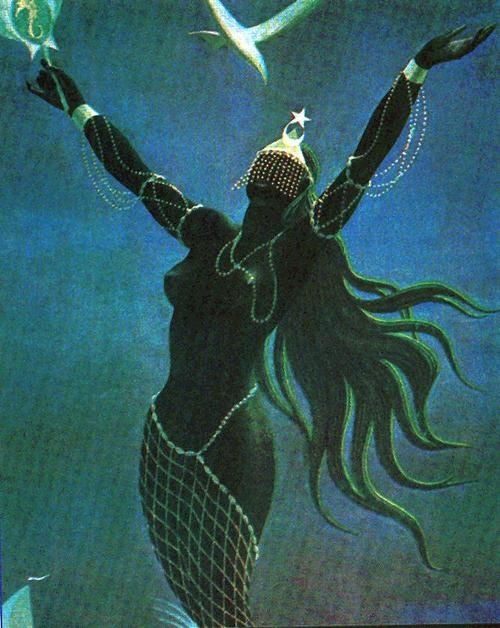
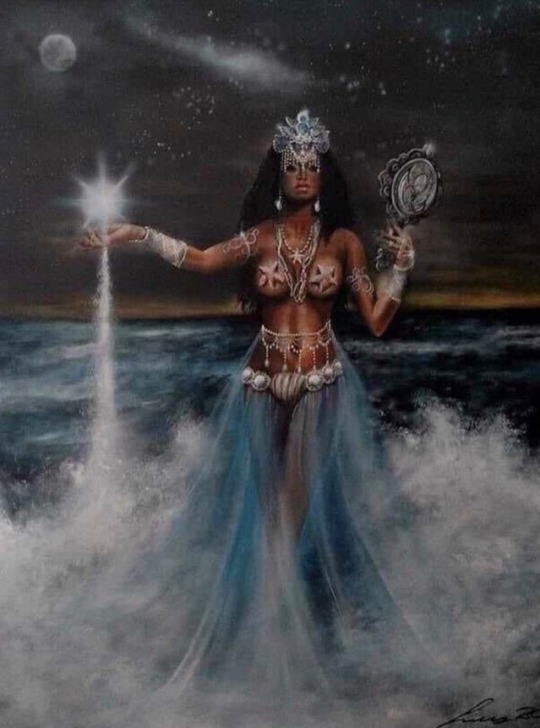
Yemonja, also spelled Yemoja or Yemaja, Yoruban deity celebrated as the giver of life and as the metaphysical mother of all orisha (deities) within the Yoruba spiritual pantheon.
Yemonja’s name is derived from the Yoruba words Yeye or Iya (“mother”), omo (“child/children”), and eja (“fish”) and thus literally means “Mother whose children are the fish.” According to the itans (stories) of the Yoruba, the orisha Yemonja was a primordial spiritual entity who was charged by Olofi (God; also known as Olodumare) to assist the orisha Obatala with the formation of humans in Olofi’s creation of Earth. Yemonja descended to Earth on a rope with 16 other orisha from Orun, the abode of Olofi, and traveled throughout the world engaging with other orisha in preparing the world for humankind. She is the orisha of the Ogun River, the largest river within the territory of Yorubaland, and is the counterpart of Olokun, who represents the unknowable bottom of the sea.
In Yorubaland, in Nigeria, each town maintained its own deity based on the myths of its founders. Tapa (Iganna) in the Oke Ogun area is where Yemonja originated. However, the worship of Yemonja began in Saki. Abeokuta, the capital of Ogun state, is the site of her principal shrine; she is especially celebrated in the Ibara quarter of that city.
Yemonja is frequently portrayed as the wife of various male personified orisha, such as Obatala, Okere, Orisha Oko, and Erinle. She is also said to be the mother of Ogun, Sango, Oya, Osun, Oba, Orisha Oko, Babaluaiye, and Osoosi. Many other itans describe her as having never given birth but as having raised many children, in particular Sango, Dada, and the Ibeji (twins). The itans also describe her as having long breasts as a result of the many children she nursed. Her sensitivity and embarrassment about her long breasts are consistent throughout the stories, and several tell of her turning herself into a river in response to insults about that by other orisha.
Although also attributed to the orisha Osun, stories refer to Yemonja as having been given (or as having stolen) the ability to interpret the oral scripture verses of the 16 Odu Ifa through the divination process called merindinlogun. It is said that Yemonja taught other orisha that alternative method of accessing the Odu through the “throwing” of cowrie shells.
Yemonja has been likened to amniotic fluid, because she too protects her children against a predatory world. She is temperamental and can be soothing or unpredictably violent. She is the orisha of fertility as well as of bodies of water and has under her protection dockworkers, boatwrights, fishers, sailors, swimmers, and others who work, live, or travel around water. Yemonja is the patron of the Gelede Society (“Society of Mothers”). She is associated with the fish-gill facial markings worn by the lyawo (initiate into the priesthood) and is said to have assisted Sango in ending the practice of twin infanticide in Nigeria. Her animal totems are the duck, the vulture, the snake, and the small snail; her sacrificial animals are the ram, the lamb, the duck, the rooster, the goat, the fish, and the pigeon. She is represented in her various shrines in Africa by sacred stones, known as ota, placed in river water in a calabash.
The statures of Yemonja and Olokun increased in prominence in the Americas and the Caribbean as the enslaved survivors of the Middle Passage propitiated Olokun to bless their lost kinsmen and petitioned Yemonja for an alleviation of their suffering. Yemonja’s omnipresence surrounding the islands and coastal areas of Cuba, Trinidad, and Brazil served as a continuous reminder of her ability to comfort and nurture hope. Attempts to annihilate African traditional cultural practices were resisted through the establishment of ethnic social organizations in Brazil and Cuba, as well as through the masquerading of the orisha with the saints of Roman Catholicism. In Cuba, Yemonja was creolized as Yemaya. Enslaved and free Africans who spoke Yoruba became identified as Lucumi, and their religious practice became known as Regla Lucumi. In the Brazilian religious movement Candomblé, she is known as Yemanja and has been celebrated since the 1930s on New Year’s Eve as followers of Candomblé and the Amerindian Umbanda systems construct miniature altars on the beaches and send small paper boats into the sea with inscribed prayer.
In Cuban, Brazilian, Trinidadian, Puerto Rican, and U.S. homes, Yemonja’s altars are often decorated with fountains and other symbols of the sea, such as fish nets, miniature boats, shells, live fish, peacock feathers, fans, and a blue or blue-and-white crockery vessel that houses her sacred stones in ocean or river water. The number 7 belongs to her, representing the seven seas; her devotees wear seven silver bracelets, and she is often seen wearing full skirts with seven blue-and-white layers. Her necklace, ileke, is made of crystal or crystal and blue beads, sometimes with red coral. She is summoned with a gourd rattle.

32 notes
·
View notes
Text
SAINT OF THE DAY (February 25)
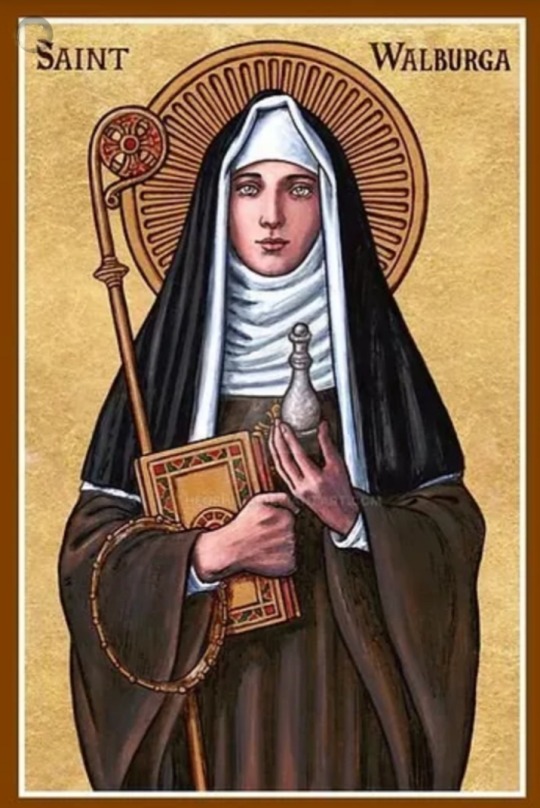
Walburga (also called Walpurga) was born around 710 in Wessex, England. She was the daughter of Richard the Pilgrim, one of the under-kings of the West Saxons.
When he was starting with his two sons on a pilgrimage to the Holy Land, he entrusted Walburga, then eleven years old, to the abbess Tatta of Wimborne.
Richard died at Lucca, Italy, en route to the Holy Land on pilgrimage.
Her education
Walburga advanced in learning and holiness. Scarcely a year after her arrival, Walburga received news of her father’s death at Lucca.
Her mother, Winna, was the sister of St. Boniface who went as a missionary to Germany.
She had two brothers, Willibald and Winnibald, who later joined their uncle Boniface as missionaries in Germany.
Her uncle a missionary in Germany
During this period, her uncle, St. Boniface, had begun preaching the gospel in Germany.
He saw that scattered efforts at preaching would exert only a passing influence, so he decided to bring the whole country under an organised system.
As he moved along preaching the gospel, he established monasteries which, like fortresses, would hold the conquered regions. From these watch-towers, the light of faith and learning would radiate far and near.
Women help in evangelisation
Boniface was the first missionary to call women to his aid.
In 748, in response to his appeal, Abbess Tetta of Wimbourne sent over Lioba and some other nuns help.
Later, Walburga joined them at a convent at Tauberbischofsheim, on the River Tauber, 30 kms south-west of Würzburg. Here, she spent two years and became skilled in medicine.
Willibald bishop of Eichstätt
One of Wallburga’s brothers, Willibald, had travelled to Jerusalem and the Middle East, then spent ten years as a monk at Monte Cassino from 730 to 740.
Pope St. Gregory II subsequently sent him to Germany to help his uncle St. Boniface, who ordained him a priest, and appointed him bishop of Eichstätt.
With her brother Winnibald
Walburga’s other brother, Winnibald, had met up with his uncle Boniface in Rome.
Boniface brought him to Germany, ordained him and gave him charge of churches near Erfurt.
When Willibald became bishop of Eichstätt, he asked Winnibald to set up a double monastery (like Wimborne) at Heidenheim (70 kilometers east of Stuttgart).
Winnibald, in turn, asked Walburga to come and be in charge of the nuns, while he was in charge of the monks.
When Winnibald died, Willibald appointed Walburga to be in charge of both nuns and monks.
Her death and influence
When Walburga died in 779, she was first buried at Heidenheim, but some time later, her body was transferred to Eichstätt beside the body of her brother.
From the rock around her tomb, an oil with medicinal qualities, called “Walburga’s oil," began to flow.
A community was later founded to care for St. Walburga’s grave and has continued down to today.
She is the patron saint of sailors, mariners, and farmers, and against hydrophobia, famine, coughs, rabies, plague, and storms.
15 notes
·
View notes
Text
Bulgarians across the country observed the Day of Saint Nicholas on December 6, known as Nikulden, commemorating the revered figure of St. Nicholas of Myra. Originating from Patara in Asia Minor in the 3rd century, St. Nicholas led a pious life, aiding the destitute and weak while embodying the principles of faith and truth. Eventually, he became the Bishop of Myra and, upon his passing in 342, his relics were transferred to the city of Bari, Italy, where they remain preserved to this day.
St. Nicholas holds a special place in Bulgarian tradition, revered as the patron saint of travelers, sailors, and fishermen. Folklore envisions him commanding storms and the sea, often depicted sailing on a golden ship. One legend tells of him rescuing a sinking boat by plugging a hole with a carp.
For fishermen, Nikulden marks the conclusion of autumn fishing, celebrated through a bountiful feast brimming with fish dishes. The saint's influence extends to boat building, where it's believed placing an icon of St. Nicholas protects sailors from tempests.
Superstitious beliefs link St. Nicholas to miraculous acts, including leaving coins for the needy, similar to the tale where he aided a destitute father struggling to provide dowries for his daughters. Hence, the holiday holds significance for bankers as well.
In honor of St. Nicholas, the Bulgarian Orthodox Church conducts special liturgies, sanctifying fish dishes for the well-being of the faithful. Traditionally, a festive table is arranged featuring fish, often stuffed carp, with rice, walnuts, and onions.
Those bearing names associated with St. Nicholas - Nikola, Nikolina, Nikolay, Nina, and more - also celebrate on this day, which is additionally esteemed in the city of Burgas.
Modern-day customs emphasize festive gatherings and fish-laden meals as a tribute to the revered saint. St. Nicholas Day resonates as a cherished occasion of faith and festivity across Bulgaria.
2 notes
·
View notes
Photo
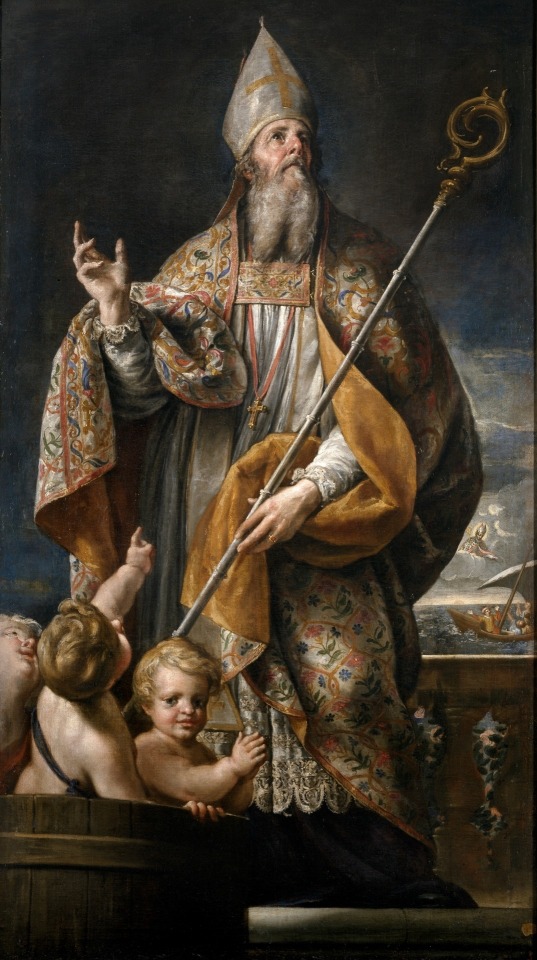
THE DESCRIPTION OF SAINT NICHOLAS The Bishop Known as Santa Claus Feast Day: December 6
"The giver of every good and perfect gift has called upon us to mimic God’s giving by grace through faith, and this is not for ourselves."
If you believe in Santa when you are a kid a long time ago, you believe in Santa. But this bishop loves to give cheer to the kids and puts names onto the Nice List, we are talking about Nicholas of Myra, aka Nicholas the Wonderworker. Nicholas is considered primarily as the patron saint of children, Nicholas is also invoked by sailors, merchants, bakers, travelers and pawnbrokers, and with Saint Andrew is honored as the co-patron of Russia.
Nicholas was traditionally born on March 15, 270 AD in Patara, Roman Empire (modern-day Gelemiş, Kaş, Antalya, Turkey) to a weathy family of Greek Christians. His parents were named Epiphanius and Johanna, but, according to others, they were named Theophanes and Nonna. Nicholas's uncle was the bishop of the city of Myra, also in Lycia. Recognizing his nephew's calling, Nicholas's uncle ordained him as a priest. After visiting the Holy Land, Nicholas returned to Myra. The bishop of Myra, who had succeeded Nicholas's uncle, had recently died, and the priests in the city had decided that the first priest to enter the church that morning would be made bishop. He went to the church to pray and was therefore proclaimed the new bishop. He is said to have been imprisoned and tortured during the Great Persecution under the Emperor Diocletian, but was released under the orders of the Emperor Constantine the Great.
One of the earliest attested stories of Saint Nicholas is one in which he saves three innocent men from execution. According to Michael the Archimandrite, three innocent men were condemned to death by the governor Eustathius. As they were about to be executed, Nicholas appeared, pushed the executioner's sword to the ground, released them from their chains, and angrily chastised a juror who had accepted a bribe. Michael tells another story in which the consul Ablabius accepted a bribe to put three famous generals to death, in spite of their actual innocence. Nicholas appeared to Constantine and Ablabius in dreams, informing Constantine of the truth and frightening Ablabius into releasing the generals, for fear of Hell.
Nicholas is said to have attended the First Council of Nicaea in 325 AD, where he is said to have been a staunch opponent of Arianism and devoted supporter of Trinitarianism, and one of the bishops who signed the Nicene Creed. His attendance at the Council of Nicaea is attested early by Theodore the Lector's list of attendees, which records him as the 151st attendee. However, he is conspicuously never mentioned by Athanasius of Alexandria, the foremost defender of Trinitarianism at the council, who knew all the notable bishops of the period, nor is he mentioned by the historian Eusebius, who was also present at the council. A later legend, first attested in the fourteenth century, over 1,000 years after Nicholas's death, holds that, during the Council of Nicaea, Nicholas lost his temper and slapped 'a certain Arian' across the face. On account of this, Constantine revoked Nicholas's miter and pallium.
Later versions of the legend embellish it, making the heretic Arius himself and having Nicholas punch him rather than merely slapping him with his open hand. In these versions of the story, Nicholas is also imprisoned, but Jesus Christ and the Virgin Mary appear to him in his cell. He tells them he is imprisoned 'for loving you' and they free him from his chains and restore his vestments.
There were other reputed miracles associated with him, but there is one. Unable to support his three daughters, who could not find husbands because of their poverty, he was determined to give them over to prostitution. Then Nicholas, under the cover of darkness, took a bag of gold and threw it at the open window of their house. Here was a dowry for the eldest girl, who was soon duly married. At intervals, Nicholas did the same second and the third daughter. At the last time, the father, who was on the watch, recognized his benefactor and overwhelmed him with gratitude.
Traditionally, Nicholas departed from the world on December 6, 343 AD in Myra, Roman Empire (modern-day Demre, Antalya, Turkey) at the age of 73. Ultimately, his kindness and generosity became known worldwide. His body was buried in the cathedral at Myra. It remained there until 1087, when seamen of Bari, an Italian coastal town, seized the relics of the saint and transferred them to their own city. Veneration for Nicholas had already spread throughout Europe as well as Asia, but this occurrence led to a renewal of devotion in the West. Countless miracles were attributed to the saint's intercession. His relics are still preserved in the church of San Nicola in Bari; an oily substance, known as Manna di S. Nicola, which is highly valued for its medicinal powers, is said to flow from them.
In the 19th Century, some Dutch Protestants contracted his name into 'Santa Claus', and made him the jolly and popular bringer of Christmas gifts. His red suit trimmed with white fur originated in the bishop's miter and cape. His association with reindeer from the North Pole, and the climbing down of chimneys to leave presents under the Christmas tree, were popularized by some Americans writers. Santa Claus symbolizes the true meaning of Christmas, that of love and generosity for all the poor of the world. Many countries and locations honor St. Nicholas as patron: Greece, Russia, the Kingdom of Naples, Sicily, Lorraine, and many cities in Italy, Germany, Austria, and Belgium.
#random stuff#catholic#catholic saints#saint nicholas#nicholas of myra#nicholas of bari#nicholas the wonderworker#san nicolas#santa claus
16 notes
·
View notes